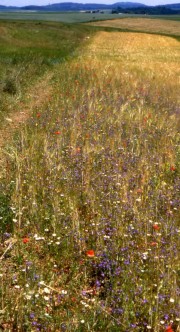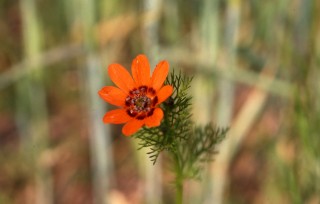100 fields for biodiversity

Calcarous field in the northern Eifel (Western Germany) with more than 40 species, e.g. European Venus´Looking Glass (Legousia speculum-veneris)
Project goal: a network of conservation fields in Germany
The project „100 fields for biodiversity“ aims at establishing a nationwide conservation field network for wild arable plant species. Through this project, which is financially supported by the Deutsche Bundestiftung Umwelt (DBU, www.dbu.de), there is a realistic chance of countering the ongoing loss of species by implementing a network of conservation fields. The conservation of typical arable plant communities such as Caucalido-Adonidetum flammeae, Teesdalio-Arnoseridetum and Papaveretum argemones should be ensured within every ecosystem of Germany with the help of these „conservation fields“. On these fields, crop management is carried out without herbicide use and according to the growth preferences of the wild arable plants. The conservation fields should act as future centres for potential re-colonisation of rare species.

Adonis aestivalis (Summer Pheasant's Eye )
www.schutzaecker.de
The project homepage provides information about establishing the network of conservation fields and is updated regularly. The website serves for information exchange and for connecting the stakeholders.





